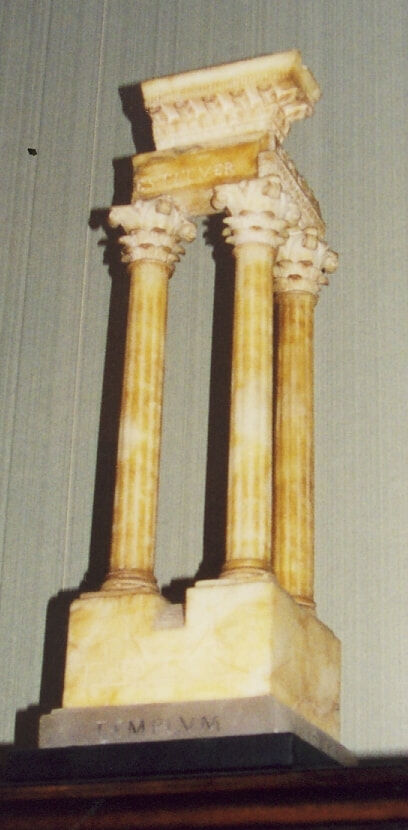THREE CLASSIC ORDERS OF GREEK ARCHITECTURE

THREE CLASSIC ORDERS OF GREEK ARCHITECTURE
By Anita Simon
The Corinthian Column
At The Johnston Collection we have two examples of these: The marble souvenirs that were probably brought back from Italy (below), and the fragments from an 18th century Meissen pink and white porcelain dessert table decoration.
This design represents one of the three classic orders of architecture that we have inherited from the Greeks. These classical orders-controlled proportion in Greek architectural design. The Corinthian column, made up of capital, pillar and base (as with our pieces) generally rests on a pedestal, and has a complex entablature above the capital that supports the pediment. The capital or decorative head is based on the spiny leaf of the acanthus plant. Its style was probably initiated in the 5th century BCE and was used in the 4th century BCE for interior columns. It has been an inspiration for architecture many, many times in the past 2000 years.
The Ionic Column
Seen in the Green Drawing Room, it is characterised by four spiral 'volutes' which decorate its capital. The design is based on the Egyptian lily and the volutes act as a decorative bracket supporting the architrave.
The Doric Column
The column is simpler with a plain capital and no base. It is a very early design and it is characterised by its strength and elegance and the pure harmony of the order. It is taller and more majestic than the Ionic order and is rather more delicate. Both orders were developed for the superstructure of temples and were originally constructed in wood.
References
Therle Hughes, A-Z Collector’s Terms, Chancellor Press, 1979.
Botsford & Robinson, Hellenic History, Macmillan, 1957
This article was first published in fairhall , Issue 2, April 2011, pp 9-10.
Journals
About US
Explore
Contact
VISIT
See our VISIT page for hours and directions
BY PHONE
+61 3 9416 2515
BY POST
PO Box 79, East Melbourne VIC 8002
ONLINE
General enquiries
Membership enquiries
Shop
Donation enquiries
Subscribe to E-Newsletter



